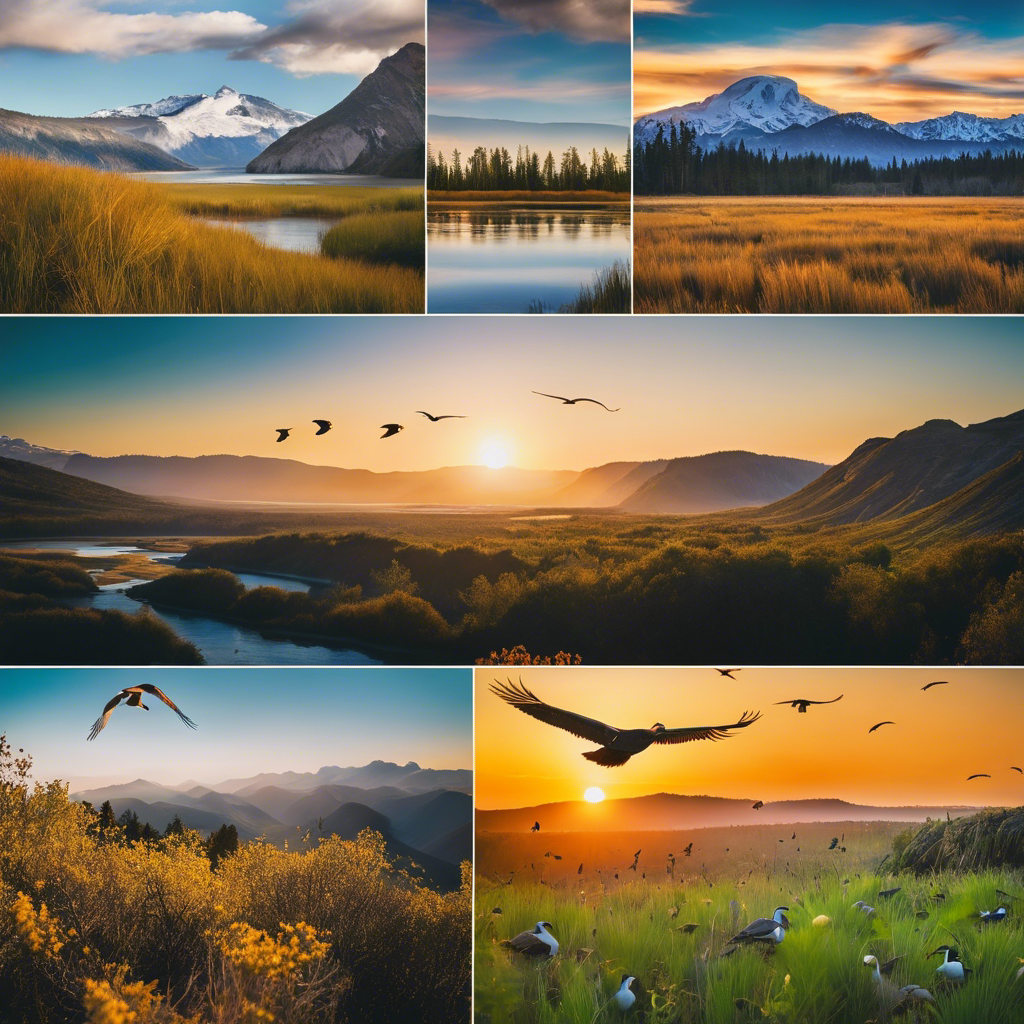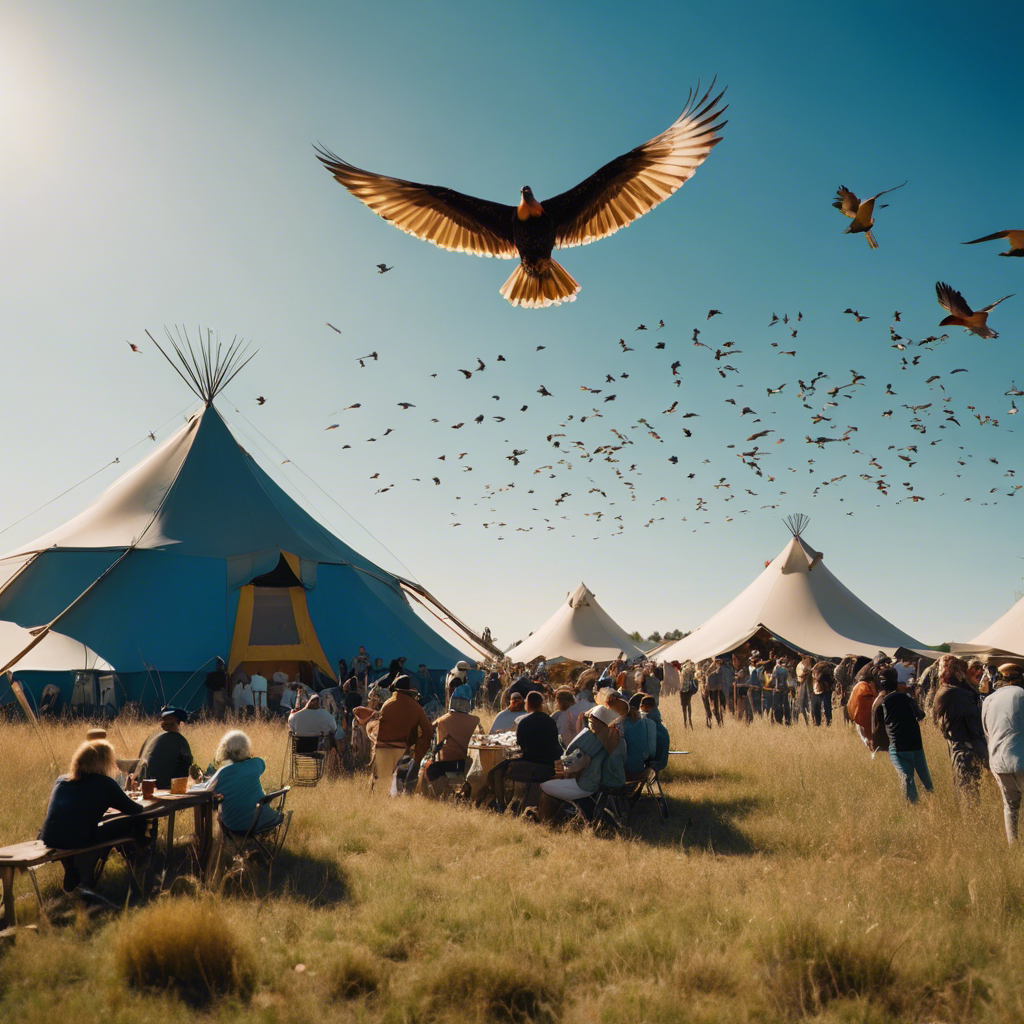As I delved into the realm of birdwatching, my experience transformed from mere curiosity to a meaningful bond with nature. With years of expertise, I’ve learned that a reliable pair of binoculars is essential, but so is patience and an understanding of the avian world.
I believe that it’s the quiet moments, spent learning the subtle dance of a bird in its natural habitat, that truly connect us to these creatures. Each sighting is a story, a unique encounter that deepens my appreciation for the intricate tapestry of life.
Birdwatching, for me, has become a cherished dialogue with the sky.
Key Takeaways
- Choose binoculars that balance weight, optical quality, and magnification. The Celestron Nature DX is a popular option.
- Learn basic bird behaviors, such as feeding habits and social dynamics, to aid in species identification.
- Research and find ideal birding spots that have diverse vegetation and water sources, and keep a journal of successful locations.
- Time your birdwatching outings during early morning or late afternoon, consider migratory periods and breeding seasons, and adjust your schedule according to seasonal changes.
Choose the Right Gear
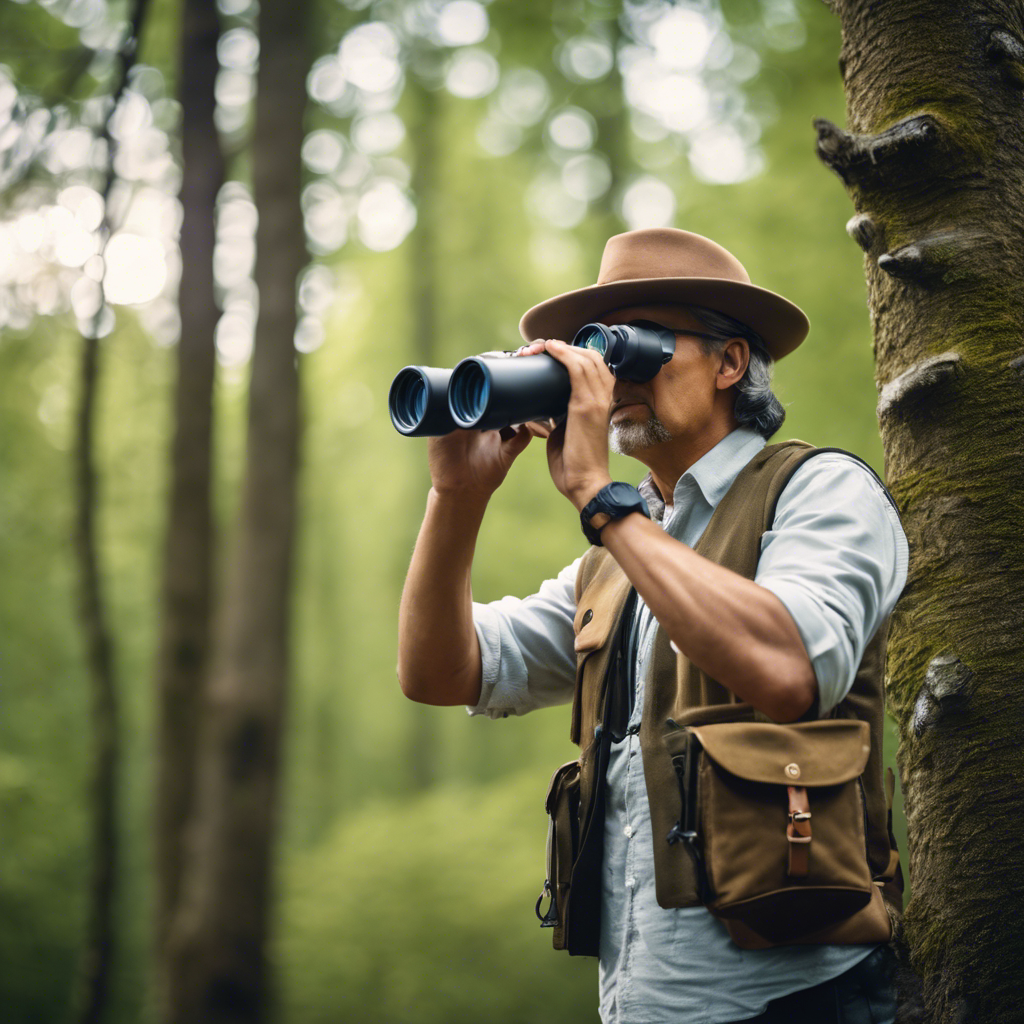
When embarking on the rewarding pursuit of birdwatching, selecting binoculars that balance weight, optical quality, and magnification is crucial. You’ll find the Celestron Nature DX, a favored pair of binoculars among enthusiasts, strikes an optimal balance for these criteria.
Compact binoculars, while offering the advantage of portability, shouldn’t compromise on the clarity and brightness essential for precise identification; test them in dim conditions before purchasing.
Augment your birding equipment with a field guide like the comprehensive ‘Birds of North America’ or the ‘Sibley Guide to Birds’ for reference.
For tech-savvy birders, birding apps such as Merlin Bird ID enhance your experience by offering quick, interactive identification assistance in the field.
Learn Basic Bird Behaviors
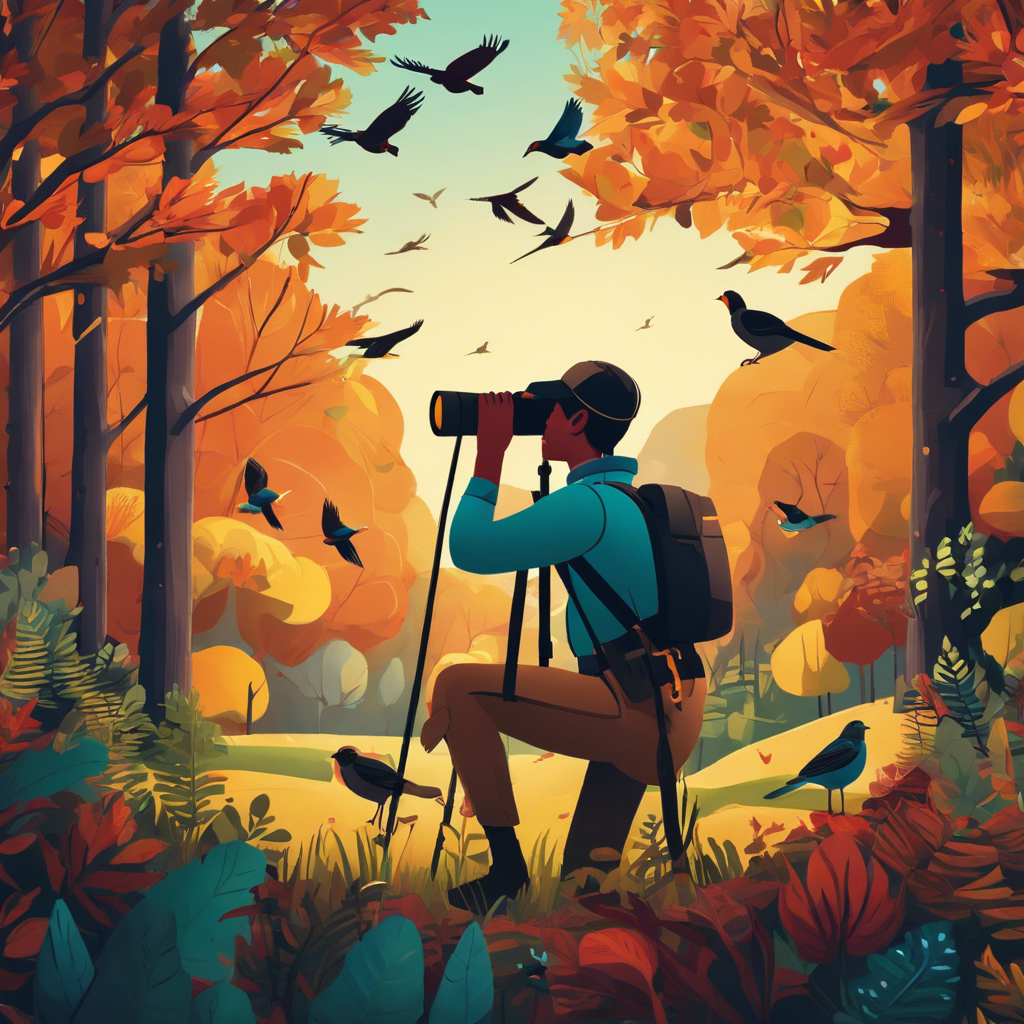
As you delve into birdwatching, it’s essential to understand the various behaviors birds exhibit, from their feeding habits to their complex social interactions. Recognizing these behaviors can help you ID species and predict their next moves. Here’s the best way to learn:
- Observing Feeding:
- Notice if a bird prefers a sunflower seed feeder; this could indicate a finch or cardinal.
- Watch for ground foragers; they might be sparrows or doves.
- Interpreting Social Dynamics:
- Pay attention to birds in groups versus solitary birds; this might suggest flocking behavior or territoriality.
- Timing Your Observations:
- Avoid noon when birds are least active.
- Remember, the early bird catches the worm, so morning is often best.
Beginning birders should embrace each birding term and behavior as a clue to the avian puzzle around them.
Find Ideal Birding Spots
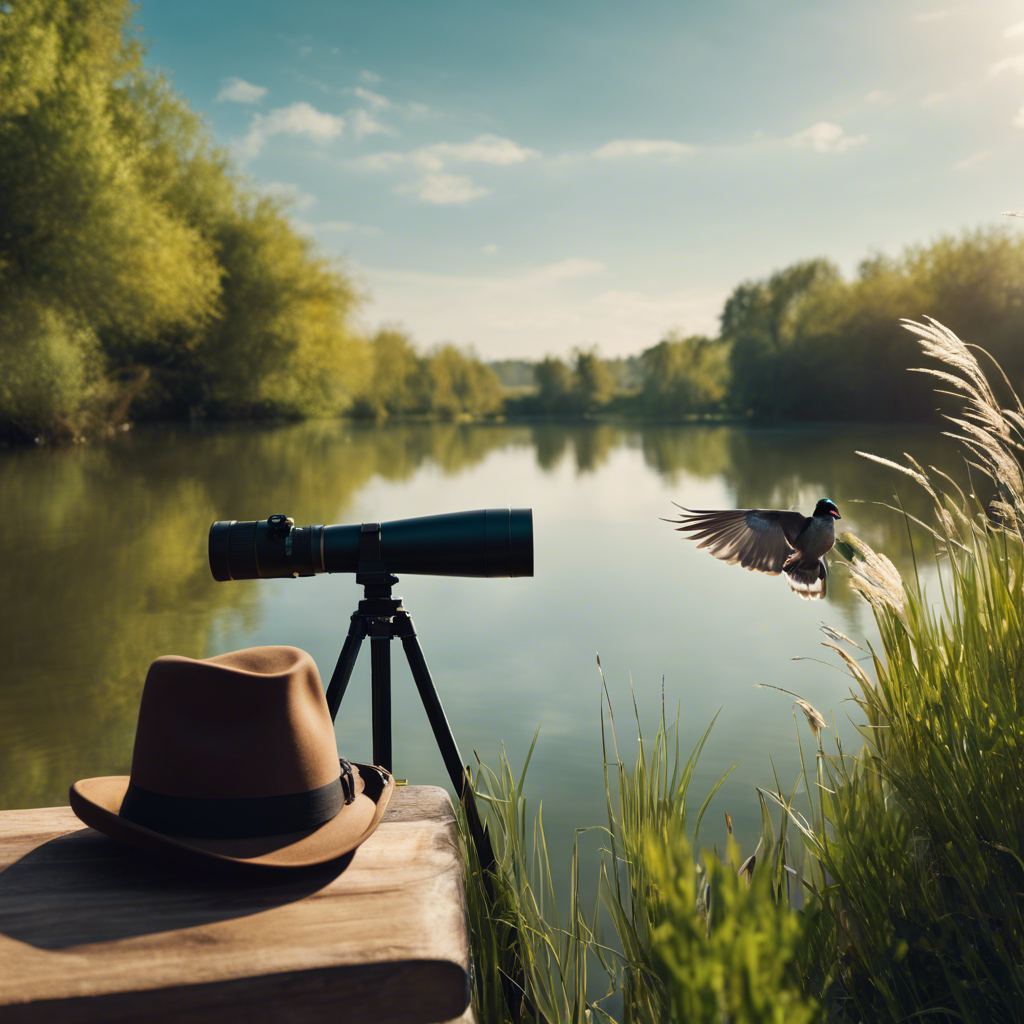
To discover the best birdwatching locales, start by researching various habitats, from lush city parks to remote nature reserves teeming with avian life. Your local park can be a great place to start local birding, offering opportunities to see plenty of common birds. Yet, don’t overlook the allure of a National Park or designated birding spots that might provide glimpses of rare birds.
Seek out green spaces with an abundance of water and diverse vegetation, as these attract a wider variety of species.
Connect with local birding clubs or online forums, where experienced birders often share their favorite places to go birding. Keep a journal of your outings, noting the birding spots that yield the most sightings, and revisit these sites throughout the year for an ever-changing display of birdlife.
Best Times for Birdwatching

Maximize your birdwatching experience by venturing out during the early morning or late afternoon, as these are the times when birds are most active and visible. For your first birdwatching outing, embrace the adage, ‘the early bird catches the worm,’ to witness a flurry of avian activity.
During these optimal times of day, consider the following to enhance your bird sightings:
- Time of Year:
- Migratory periods can bring new species to your area.
- Breeding season often results in increased vocalizations and displays.
- Weather Patterns:
- Clear days may result in more foraging activity.
- Overcast conditions sometimes lower birds from high canopies.
- Seasonal Changes:
- Dawn and dusk times shift; adjust your schedule accordingly.
- Winter may offer fewer hours of daylight, but also less foliage to obstruct views.
As you expand your range, see how many different species you can spot throughout the year, making every birdwatching for beginners session unique and rewarding.
Engage With the Birding Community

Building on your knowledge of the best birdwatching times, connecting with fellow enthusiasts can further enhance your avian adventures.
Join a local birding club where you’ll meet experienced birders eager to share insights. By participating in bird walks and field trips, you’ll gain hands-on experience in various habitats.
Engage with the birding community through citizen science projects like the eBird project, supported by the Cornell Lab of Ornithology. This not only contributes to vital research but connects you with a global network of birders.
American Birding Association events and National Audubon Society festivals offer additional opportunities to immerse yourself, learn from experts, and support initiatives like All About Birds, which depend on your contributions to educate and unite birdwatchers.
Frequently Asked Questions
How Do You Bird Watch for Beginners?
To start birdwatching, you’ll need binoculars, a field guide, and patience. Visit local parks or reserves, observe quietly, and note bird characteristics for identification. It’s a rewarding hobby that sharpens your attention to nature.
What Not to Wear When Birding?
You shouldn’t wear bright, flashy clothes or reflective items that can startle birds. Skip strong scents and noisy fabrics to avoid disturbing them, and don’t stand out with all-black or all-white outfits.
What Is the Best Time of Day to Birdwatch?
You’ll find the best birdwatching at dawn or dusk when birds are most active. Dress comfortably and quietly, and you’ll increase your chances of spotting a wide variety of feathered friends.
What Is a Birding Checklist?
A birding checklist is your personal log for tracking birds seen. You’ll list species, locations, and dates, creating a record that highlights your birding journey and aids in conservation efforts.
Conclusion
In conclusion, to fully engage in the world of birdwatching, there are several steps you can take. First, equip yourself with quality binoculars and a guide to help you identify the different bird species. This will enhance your experience and allow you to truly appreciate the vibrant avian world around you.
Next, make it a point to observe the unique behaviors of birds in your vicinity. Take note of their feeding habits, mating rituals, and territorial displays. This will not only deepen your understanding of these fascinating creatures but also help you become a more skilled observer.
Additionally, seek out diverse habitats for a broader birdwatching experience. Different habitats support different bird species, so exploring a variety of ecosystems will expose you to a greater diversity of birds. Whether it’s forests, wetlands, or grasslands, each habitat offers its own set of avian wonders.
Embrace the dawn chorus as the prime time for birdwatching. Many bird species are most active during the early morning hours, creating a symphony of beautiful sounds. By waking up early and immersing yourself in the dawn chorus, you’ll have the opportunity to witness and appreciate the magic of birdsong.
Moreover, consider immersing yourself in the birding community. Join local birdwatching groups, participate in birdwatching events, and connect with fellow enthusiasts. Engaging with the birding community will not only allow you to learn from experienced birders but also provide opportunities to contribute to conservation efforts. By sharing your observations and supporting conservation initiatives, you can actively participate in the protection of these feathered wonders.
In summary, birdwatching is a rewarding and enriching hobby that offers a glimpse into the fascinating world of birds. By equipping yourself with the right tools, observing unique behaviors, exploring diverse habitats, embracing the dawn chorus, and immersing yourself in the birding community, you can fully engage in and contribute to the protection of these amazing creatures.

An avid ornithologist, zoologist and biologist with an unwavering passion for birds and wild animals.
Dr. Wilson’s journey in ornithology began in childhood and led him to obtain a Ph.D. in Ornithology from the prestigious Avian Research Institute. He has worked closely with renowned experts in the field and conducted extensive research and field studies globally.



